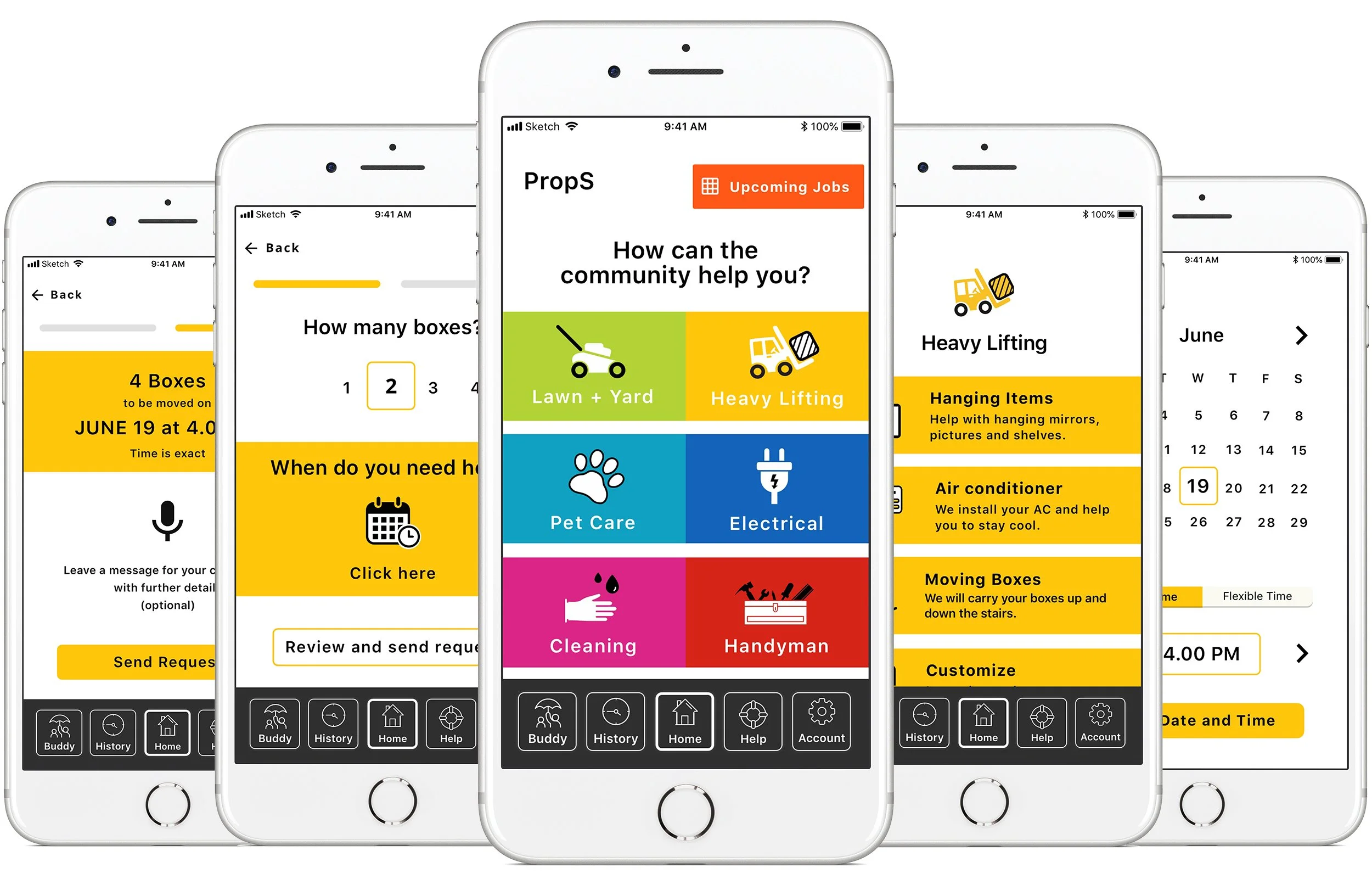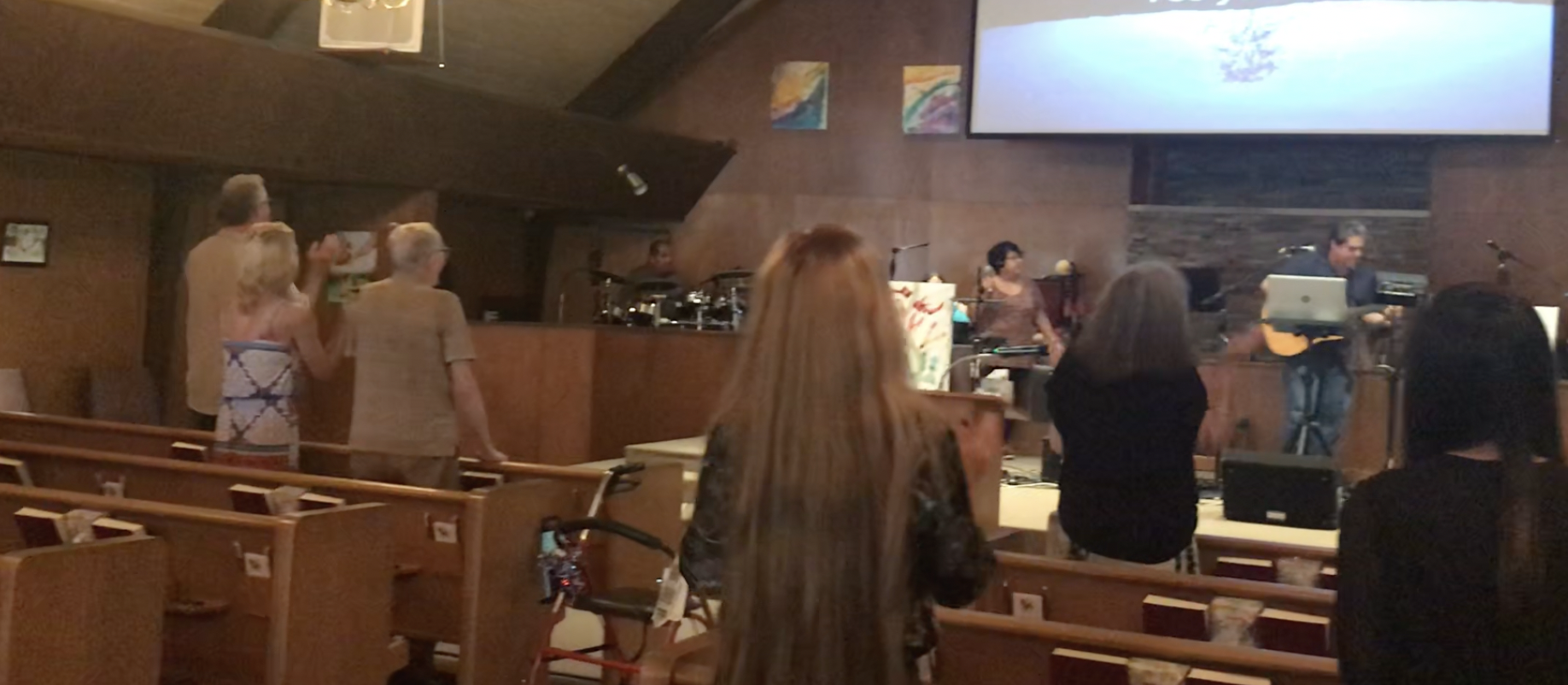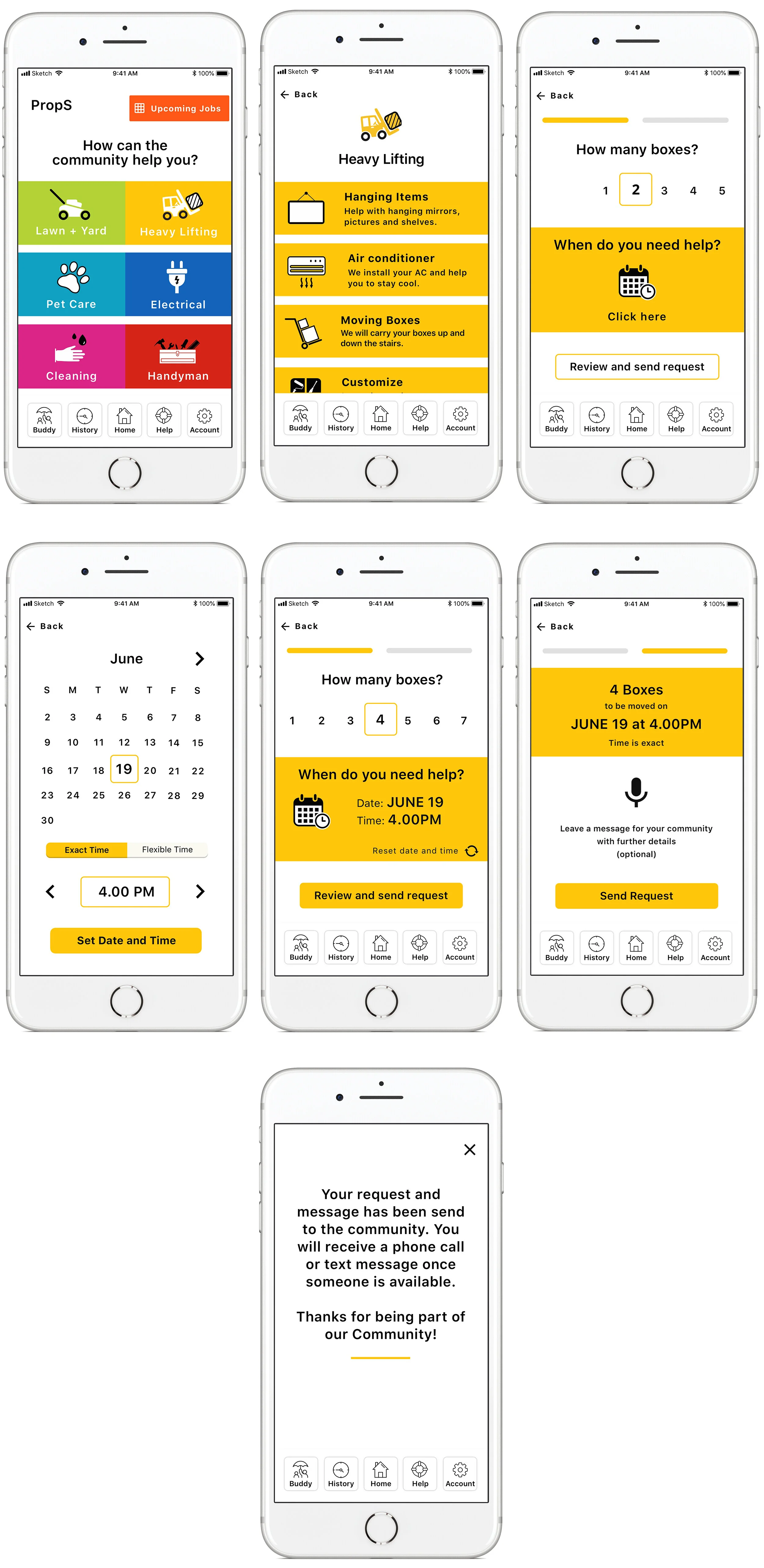How might we connect seniors living at home to their trusted communities, when they need help and support?
By 2050, 1 in 6 people globally will be over the age of 65.
According to the UN’s World Population Prospects: 2019 Revision, the population aged 65 and older is growing faster than any other age group—rising from 1 in 11 people in 2019 to a projected 1 in 6 by 2050.
As the senior population increases, I wanted to explore their needs, pain points, and what role technology might play in supporting them.
Challenge
The challenge was to explore what seniors need in their daily lives and identify how technology could meaningfully support their independence, comfort, and connection to community.Guiding questions: What are the needs and challenges seniors face in their daily lives?How can technology be used to help and assist them?
Outcome
I designed a mobile app prototype that connects seniors with trusted members of their own communities for help with daily tasks.
Approach
Meeting the community
To better understand seniors’ lived experiences, I connected with local church communities in Austin, Texas. I interviewed eight participants (5 female, 3 male), ages 66–75.
Research Goals
Understand the day-to-day challenges seniors face
Identify how, when, and why they use technology
Discover unmet needs and barriers
Evaluate pain points with existing digital tools
Excerpt from an interview
Key Takeaways
Independence is essential: Seniors actively look for services to help with daily tasks like lifting or errands, but often struggle to find suitable options.
Distrust in digital services: Many hesitate to use apps like Uber or TaskRabbit due to concerns about background checks or unfamiliarity.
Trust is local: Seniors feel most comfortable asking for help from people within their trusted communities (e.g., church groups).
Financial caution: Many worry about outliving their savings, which impacts their willingness to pay for services.
Preferred tools: Phones and tablets are favored over desktops, and voice control is appreciated due to declining motor skills.
Meet Mandy
To illustrate key behaviors and frustrations, I developed a persona based on the interviews. Mandy represents an older adult living independently who values connection, routine, and trusted relationships.
Defining the Problem
Based on insights from interviews, I generated over 20 “How Might We” questions. One insight stood out: seniors are open to using apps but only feel safe reaching out to people they already know. This insight led me to design a community-focused app concept.
How might we connect seniors living at home to their trusted communities when they need help and support?
Accessibility
There are not a lot of apps designed for seniors. Most of the apps are tools in order to help seniors to monitor their health or finances e.g. Pillboxie, Senior Savings, Sciddy. A lot of apps that are “recommended” for seniors don’t address the unique challenges seniors face using smartphone apps, since physical and cognitive abilities change with age.
What UI practices have been researched and tested so far?
Use minimal, high-contrast design
Avoid blue for key UI elements (due to color vision decline)
Add subtitles for all audio/video content
Pair icons with text to prevent confusion
Avoid slide-out menus
Always include a Back button
Let users adjust text size; use 16px minimum
Include breadcrumbs for easy navigation
Prefer touch interfaces over mouse interactions
Support voice control for motor accessibility
Storyboarding
Context Scenario
Meet Mandy and Charles. As lifting heavy objects becomes more difficult with age, they struggle to find someone to help. A friend from their church suggests using an app connected to their community.
Mandy needs help lifting boxes
One of the most common needs mentioned during interviews was help with heavy lifting. This flow shows how Mandy might use the app to request help moving boxes to the attic.
Low-Fidelity Wireframes
Design Decisions
Use minimal layout and large type
Avoid slide-out menus
Always include a Back button
Pair icons with text for clarity
Use breadcrumbs for orientation
Keep flows short and simple
Integrate voice functionality
Usability Testing
I built a rough prototype and tested it with two seniors. Each was asked to complete the task:
“You want to ask the community to help move four boxes on June 19 at 4:00 PM.”
Feedback:
“Flow is easy and intuitive.”
Observation:
Hesitation occurred when selecting date/time.
Decision:
Adjusted layout to center the copy and icon to make the icon the focal point.
High-Fidelity Wireframing: Let’s Add Some Color
Decisions:
High contrast colors
Avoid blue for key UI elements
Make calendar icon a focal point (from previous test feedback)
User Testing & Affinity Mapping: Did We Create Value?
I conducted usability tests with 7 participants (5 male, 2 female), ages 65–72.
Feedback:
Positive overall response
Selecting date/time and reset feature needs rework
Participants liked the concept
Requested ability to add community events (supporting findings that seniors enjoy being engaged)
Iterations: Considerations
Increase contrast on bottom navigation
Break up flows to reduce cognitive effort (e.g., setting date/time separately)
Make reset functionality for date/time more prominent
Learnings: Make It Fun
Conversations revealed that tech comfort levels vary widely, even within the same age group.
While some 66-year-olds were confident with apps, others felt unsure—but all shared a desire to learn, especially if it helps them stay active and connected.
The secondary research only scratched the surface. I'm eager to dive deeper and continue working on this concept app.


